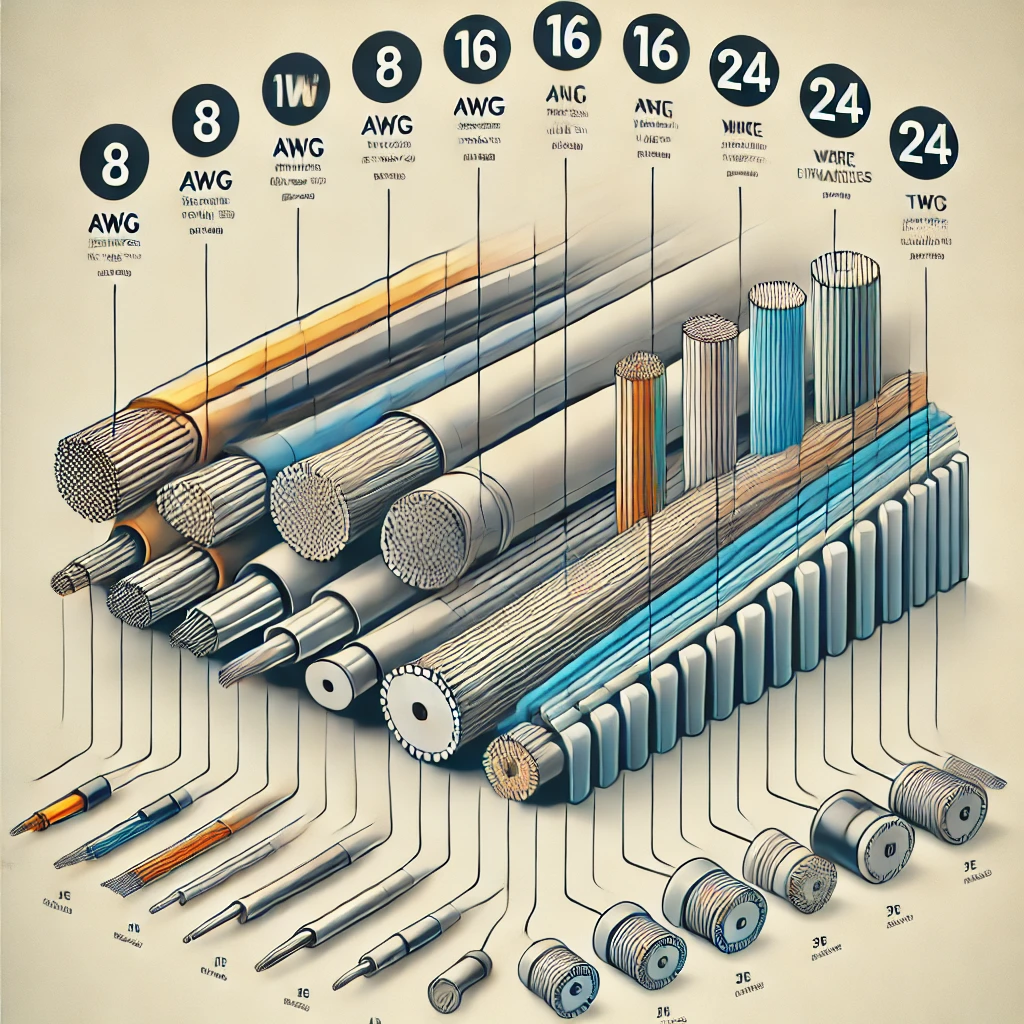what does awg mean in wire?
AWG stands for American Wire Gauge, is a standardized system used primarily in the United States and Canada (now being used in other countries as well) to measure the thickness of the electrical wires. So when we are talking about AWG wires, we refer to a wire that its size or thickness is measured using the AWG standard.

Prior to establishment of the AWG system, there were now universally accepted system to refer to the size of the electrical wires, which would lead to inconsistency between different manufacturers and end users or electrical engineers. AWG standard came to existence to tackle this issue and create uniformity between different manufacturers and industries.
Table of Contents
How Does AWG system works
Intuitively, AWG system acts in reverse. It means that as the gauge number increases, the diameter of the wire decreases. For example, a 10 AWG wire is thicker than a 12 AWG wire. AWG wires range from 0000 to 40, where 0000 AWG is the thickest wire with 11.684mm diameter and 40 AWG is the thinnest wire with 0.0799mm diameter. Below you can see a table showing the numbers for a few different AWG ranges:
| AWG # | Diameter (mm) | Diameter (inch) | Area (mm²) |
|---|---|---|---|
| 0000 (4/0) | 11.684 | 0.46 | 107.2193 |
| 000 (3/0) | 10.4049 | 0.4096 | 85.0288 |
| 00 (2/0) | 9.2658 | 0.3648 | 67.4309 |
| 0 (1/0) | 8.2515 | 0.3249 | 53.4751 |
| 1 | 7.3481 | 0.2893 | 42.4077 |
| 2 | 6.5437 | 0.2576 | 33.6308 |
| 3 | 5.8273 | 0.2294 | 26.6705 |
| 4 | 5.1894 | 0.2043 | 21.1506 |
| 5 | 4.6213 | 0.1819 | 16.7732 |
| 6 | 4.1154 | 0.162 | 13.3018 |
| 7 | 3.6649 | 0.1443 | 10.5488 |
| 8 | 3.2636 | 0.1285 | 8.3656 |
| 9 | 2.9064 | 0.1144 | 6.6342 |
| 10 | 2.5882 | 0.1019 | 5.2612 |
The AWG metric directly affects the physical and electrical properties of the wire. A thicker wire has a lower resistance and can carry more ampere current. This is important since if a wire with a lower thickness is chosen, it can lead to insulation failure or short circuits, and fire hazards in the worst case. However, since wires with lower AWG (more thickness) are more expensive to buy, it is important to chose the optimum size based on the application and current draw.
Applications of AWG Wire
AWG wire systems can be used in every small or big industry that is dealing with electrical wiring. Whether it is in delicate applications like such as in computers or communication devices where the thin AWG wires are used, or in high power industrial machines, automotive wiring where thick AWG wires are used to be able to carry more currents.
Semi solid state battery manufacturing is another field where the AWG system is used. Base on the capacity of the battery and its number of cells, the proper AWG wire will be used to make sure the required current is provided without any overheating risk.
FAQ
AWG cable meaning?
Refers to a cable made up of wires that conform to the AWG standard.
What does awg measure?
AWG (American Wire Gauge) measures the diameter (thickness) of a wire, which directly influences its electrical properties
1. Wire Diameter
2. Electrical Resistance
3. Current-Carrying Capacity
Difference between awg and gauge?
| Aspect | AWG | Gauge (General) |
|---|---|---|
| Scope | Specific to electrical wires | Applies to various materials |
| Standardization | Follows the AWG system | Depends on the industry |
| Applications | Electrical wiring, cables | Sheet metal, medical tools, etc. |
| Interchangeability | Universal within North America for wires | Varies depending on the type of gauge |




